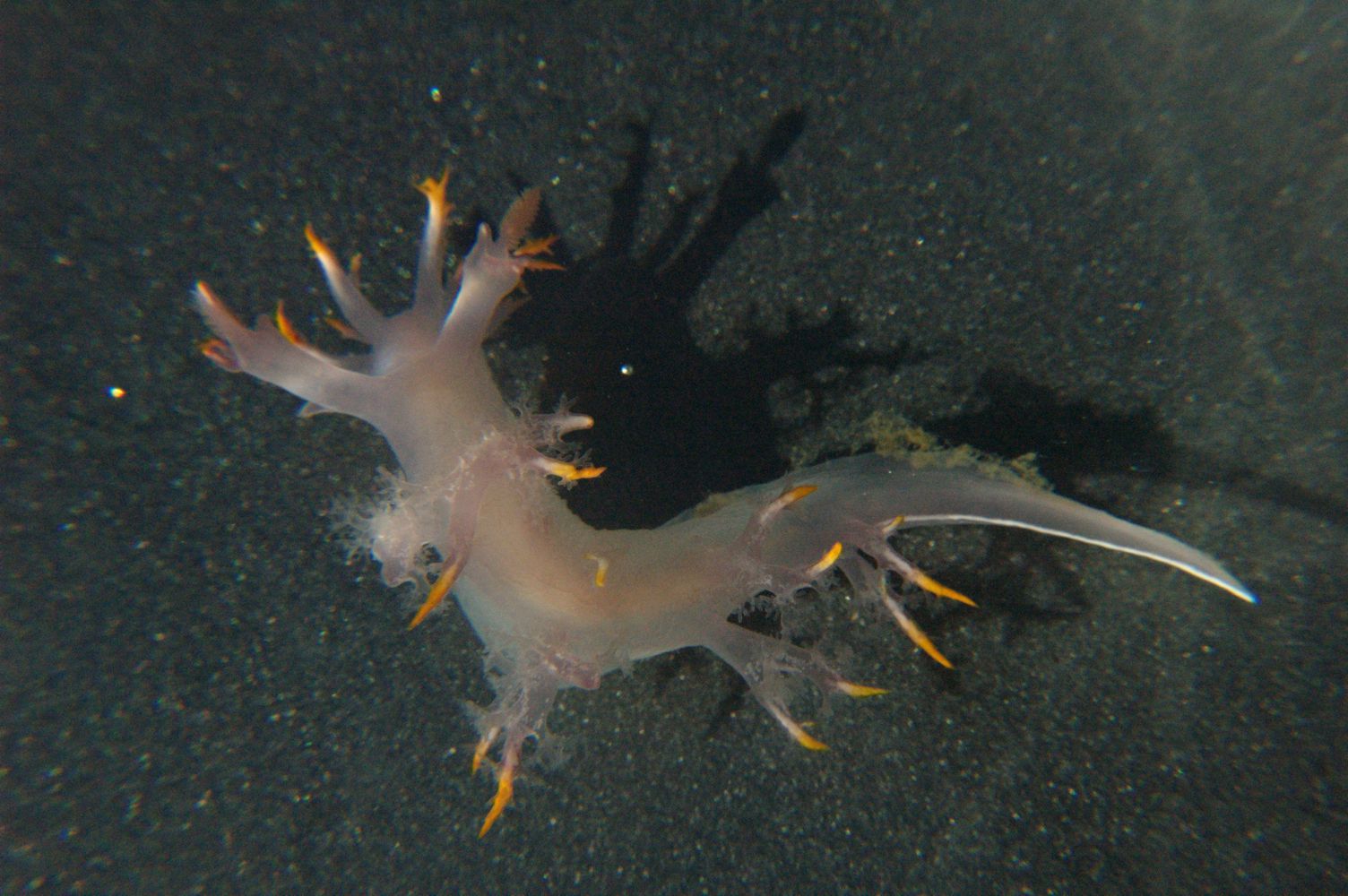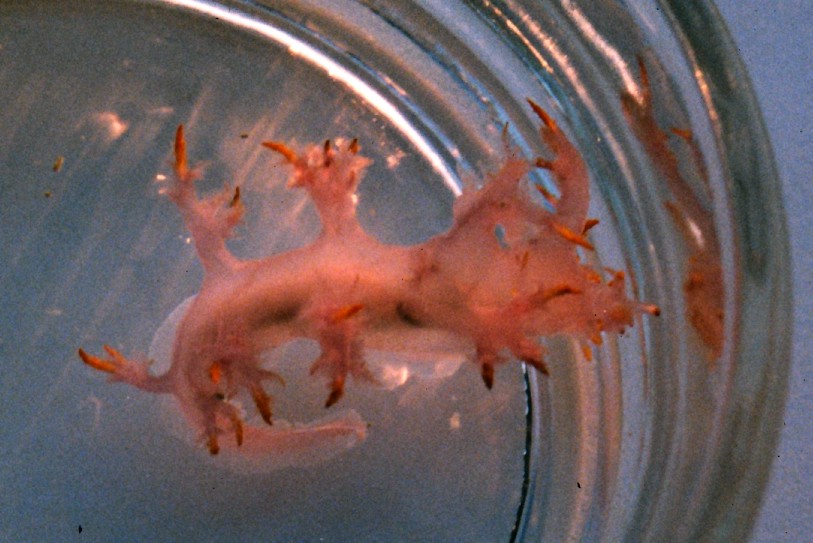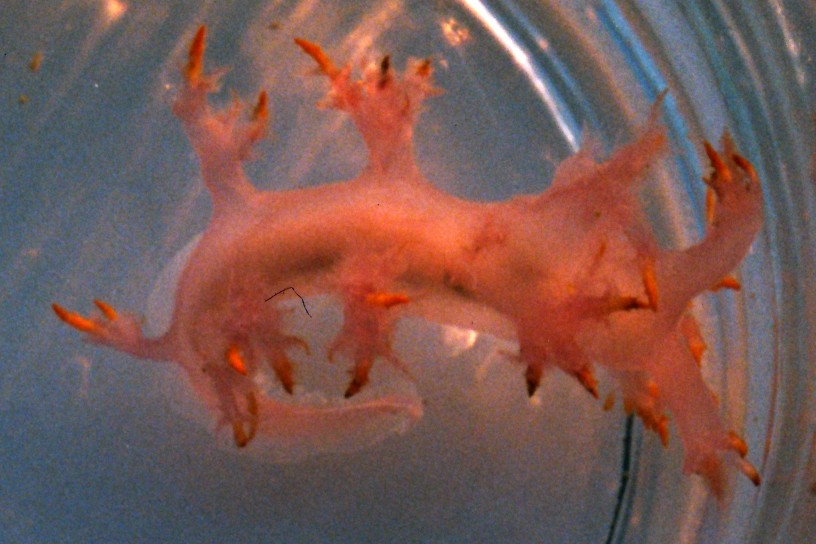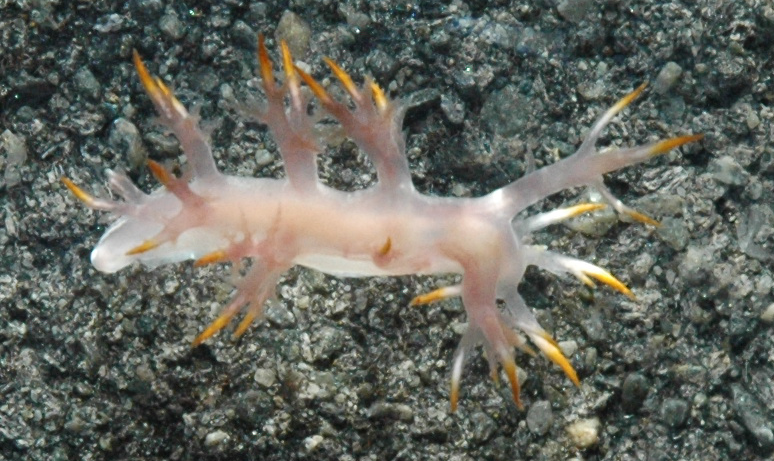Dendronotus diversicolor Robilliard, 1970Common name(s): |
|
| Synonyms: |  |
| Phylum Mollusca
Class Gastropoda Subclass Opisthobranchia Order Nudibranchia Suborder Dendronotacea Family Dendronotidae |
|
| (Dendronotus diversicolor found by Dave Cowles, 2014 | |
| (Photo by: Dave Cowles, 2014). | |
How to Distinguish from Similar Species: Is quite similar to D. albus which has 4-8 pair of cerata and the dorsomedial white line extending farther up to the 4th to 2nd pairs of cerata
Geographical Range: Ketchikan, Alaska to San Diego, CA
Depth Range:
Habitat: Hydroids
Biology/Natural History: This species feeds on hydroids, including Sertularella tricuspidata and Abietinaria spp
| Return to: | |||
| Main Page | Alphabetic Index | Systematic Index | Glossary |
References:
Dichotomous Keys:Kozloff 1987, 1996
General References:
Morris
et al, 1980
Scientific Articles:
General Notes and Observations: Locations, abundances, unusual behaviors:

Dendronotus diversicolor found on a hydroid at 20 m depth at Sares Head). Animal's head is to right. About 4 cm long. Photo by Dave Cowles, Aug 1997.

Another view of the same individual. Photo by Dave Cowles 1997

A 3 cm long individual found in 2021. Photo by Dave Cowles, July 2021
Authors and Editors of Page:
Dave Cowles (2005): Created original page